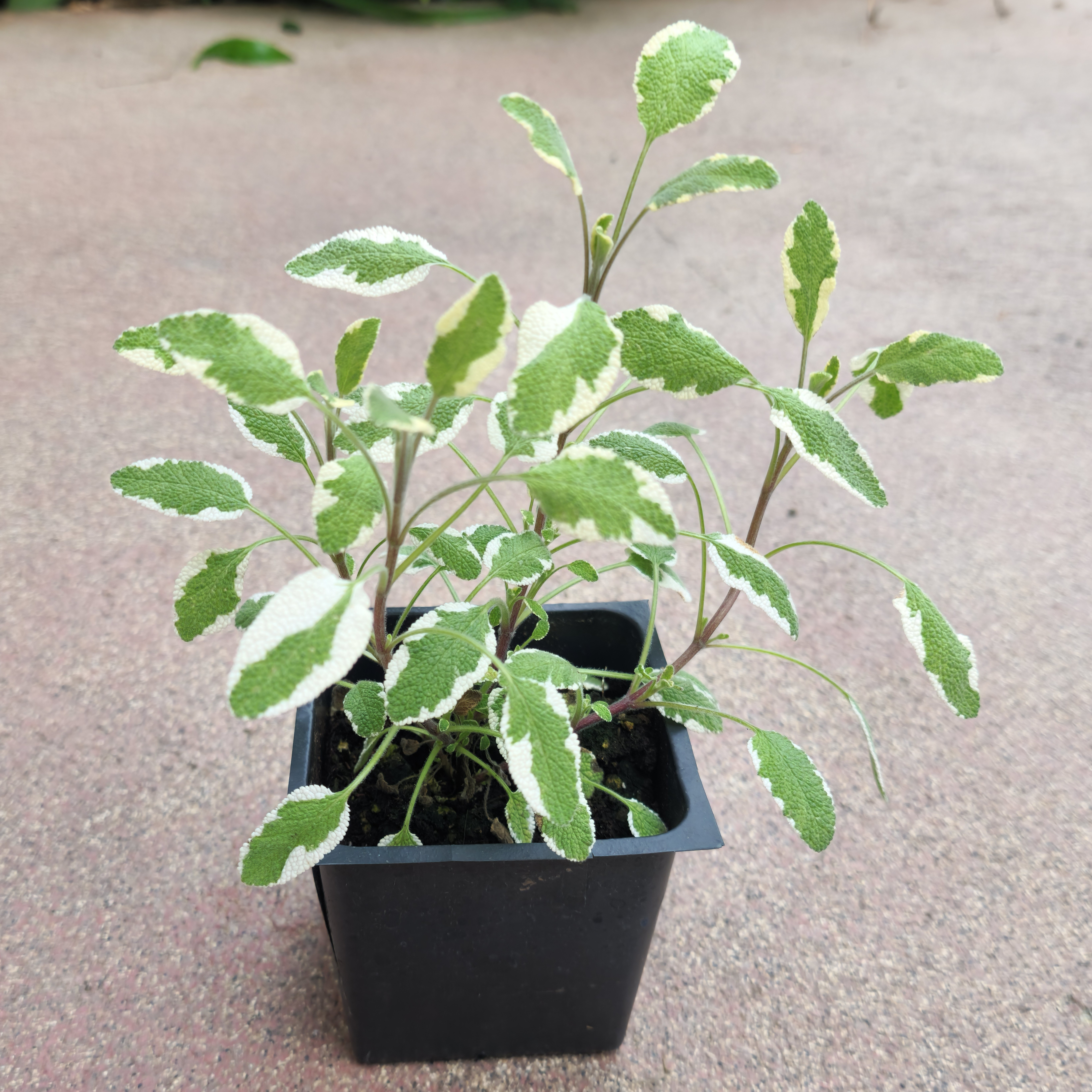
Harvest Time
80 days
Difficulty
moderate
Growing Methods
Container
Raised Bed
USDA Hardiness Zones
4
5
6
7
8
9
About Tricolor Sage
Tricolor Sage is a striking, spreading evergreen sub-shrub reaching 12-18 inches tall and wide with strongly aromatic foliage. The plant features oblong leaves with gray-green centers adorned with cream-white margins and pink-purple streaks, creating a vibrant ornamental display. This culinary herb produces pale blue flowers on upright spikes in early summer, attracting beneficial pollinators to the garden. As a cultivar of common sage, it combines ornamental value with the medicinal and culinary benefits of its parent species. The plant adds vibrant color to herb gardens, perennial borders, and containers while maintaining the aromatic and flavor properties of traditional sage.
General Care Instructions
Sunlight Requirements
- • Requires 6-8 hours of direct sunlight for optimal growth and flavor
- • Tolerates partial shade (4-6 hours of direct sun)
- • Morning sun with afternoon shade works well in hot climates
- • Insufficient light leads to leggy growth and reduced essential oils
Temperature Range
- • Ideal growing temperature range: 70-90°F (21-32°C)
- • Protect from temperatures below 50°F (10°C)
- • Will suffer damage or die when exposed to frost
- • Growth slows below 60°F (15°C) and above 95°F (35°C)
- • Optimal soil temperature for germination: 70-85°F (21-29°C)
Fertilizer Requirements
- • Container plants: Half-strength balanced liquid fertilizer every 2-3 weeks
- • Garden plants: Balanced organic fertilizer monthly
- • Begin fertilizing when plants are 4-6 inches tall
- • Reduce feeding in late season to prevent excessive leaf growth
- • Signs of deficiency: yellowing leaves, stunted growth, pale foliage
- • Avoid high-nitrogen fertilizers which reduce essential oil content
Watering Needs
Newly planted
- • Keep soil consistently moist but not soggy
- • Water when top half-inch of soil feels dry
- • Avoid overhead watering to prevent disease
Establishing plants
- • Container plants: Check daily; water when top inch of soil is dry
- • Garden/raised beds: Deep watering 1-2 times weekly
- • More frequent watering during hot, dry periods
Established plants
- • Continue consistent moisture for best flavor
- • Reduce watering slightly during cooler weather
- • Never allow soil to completely dry out